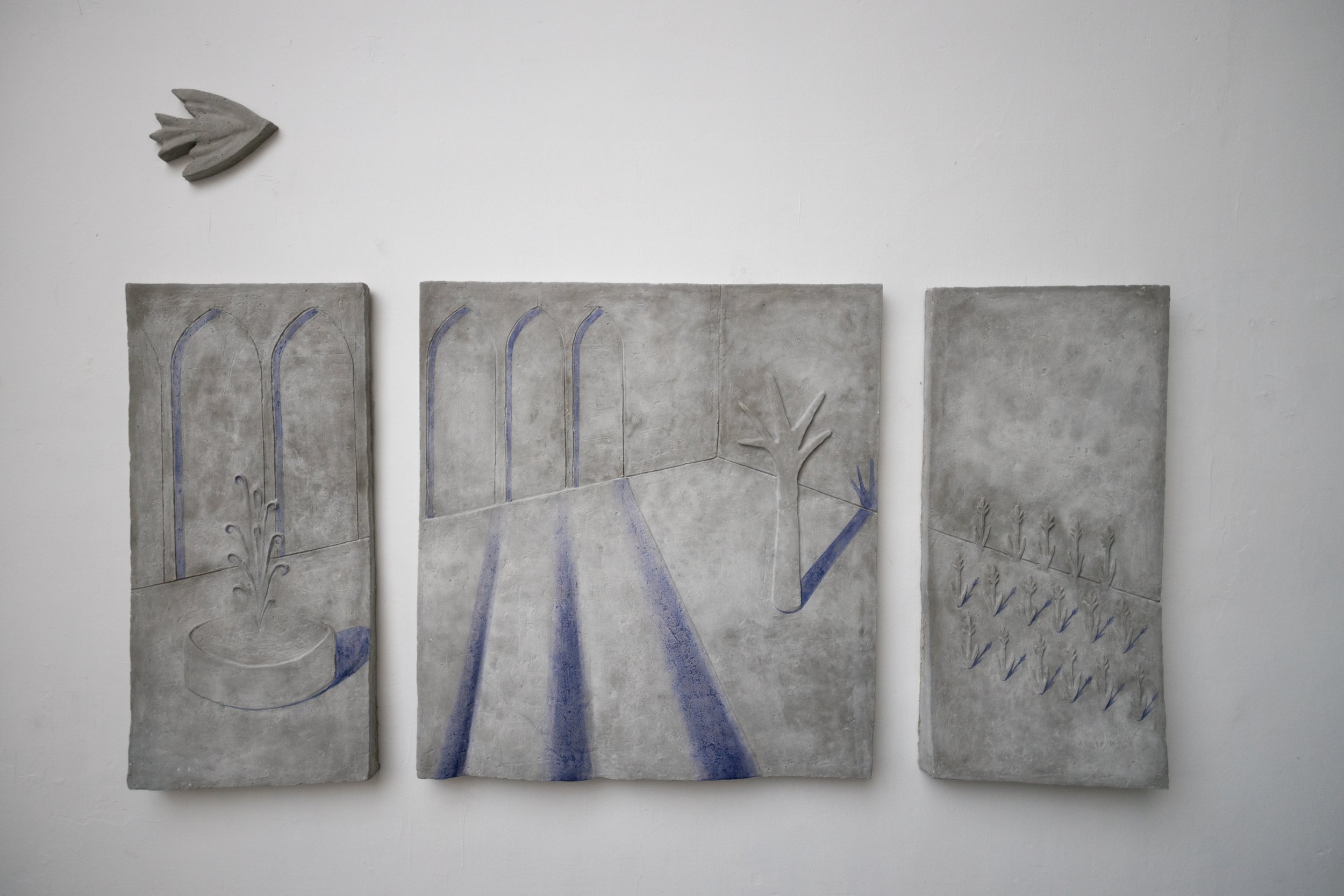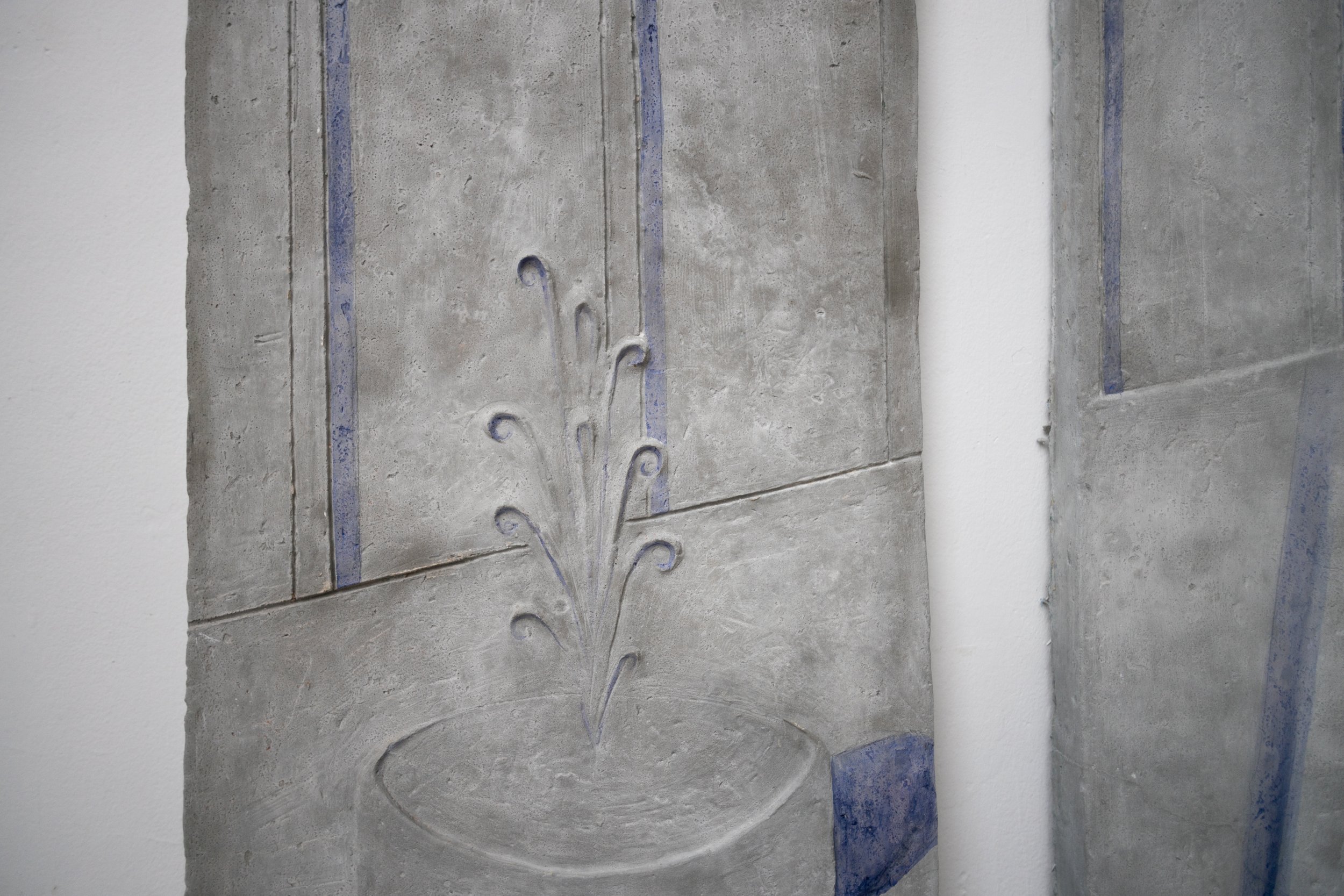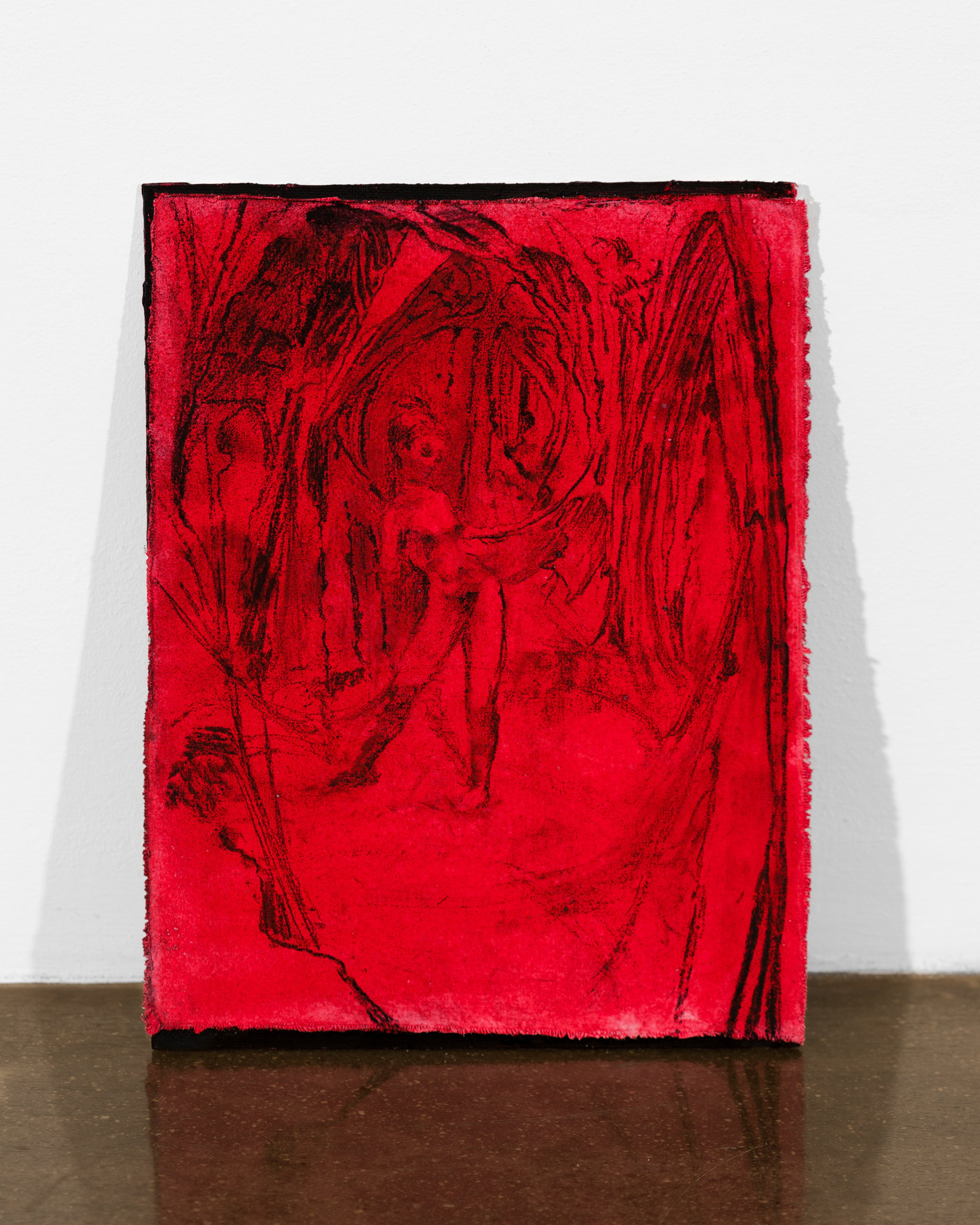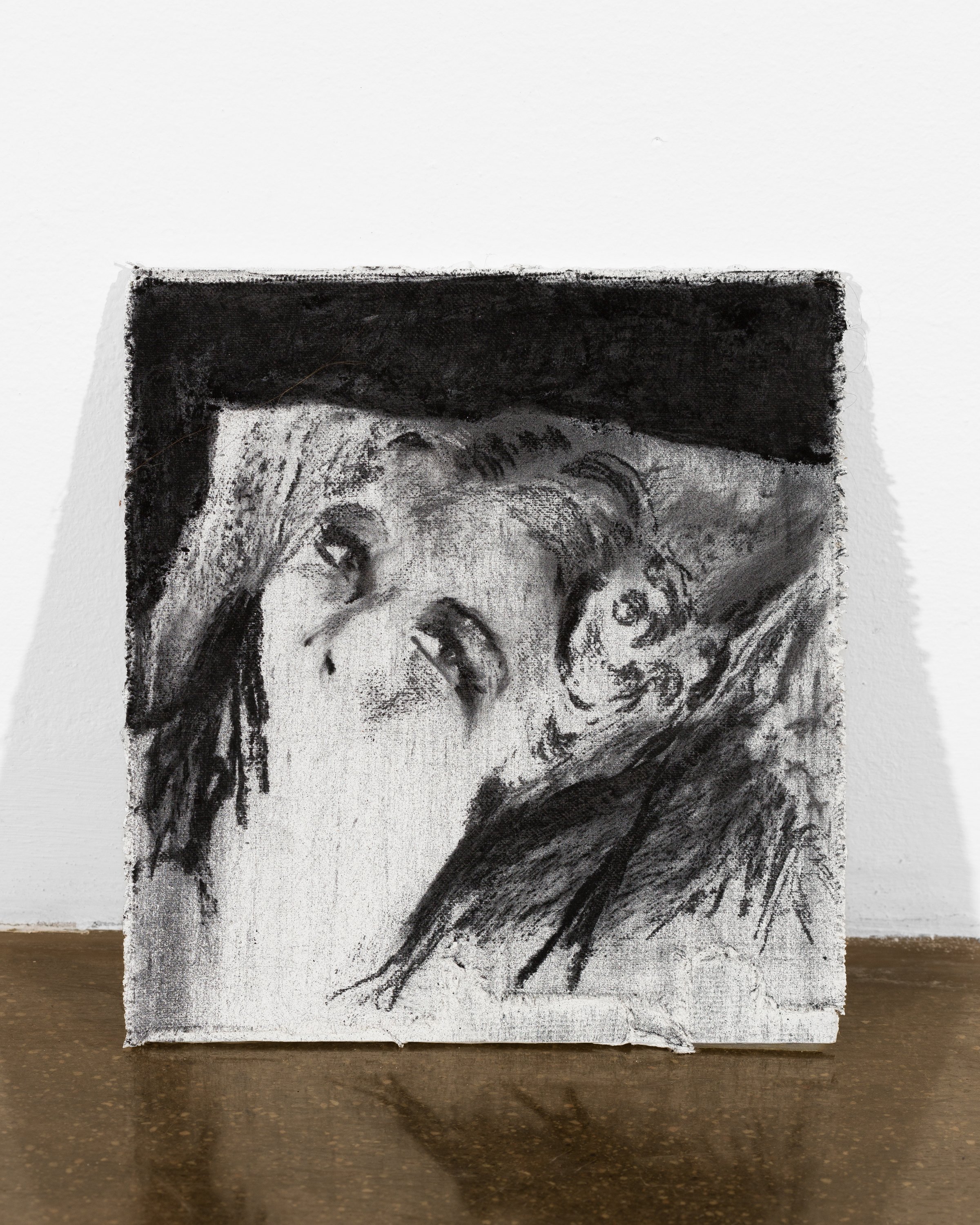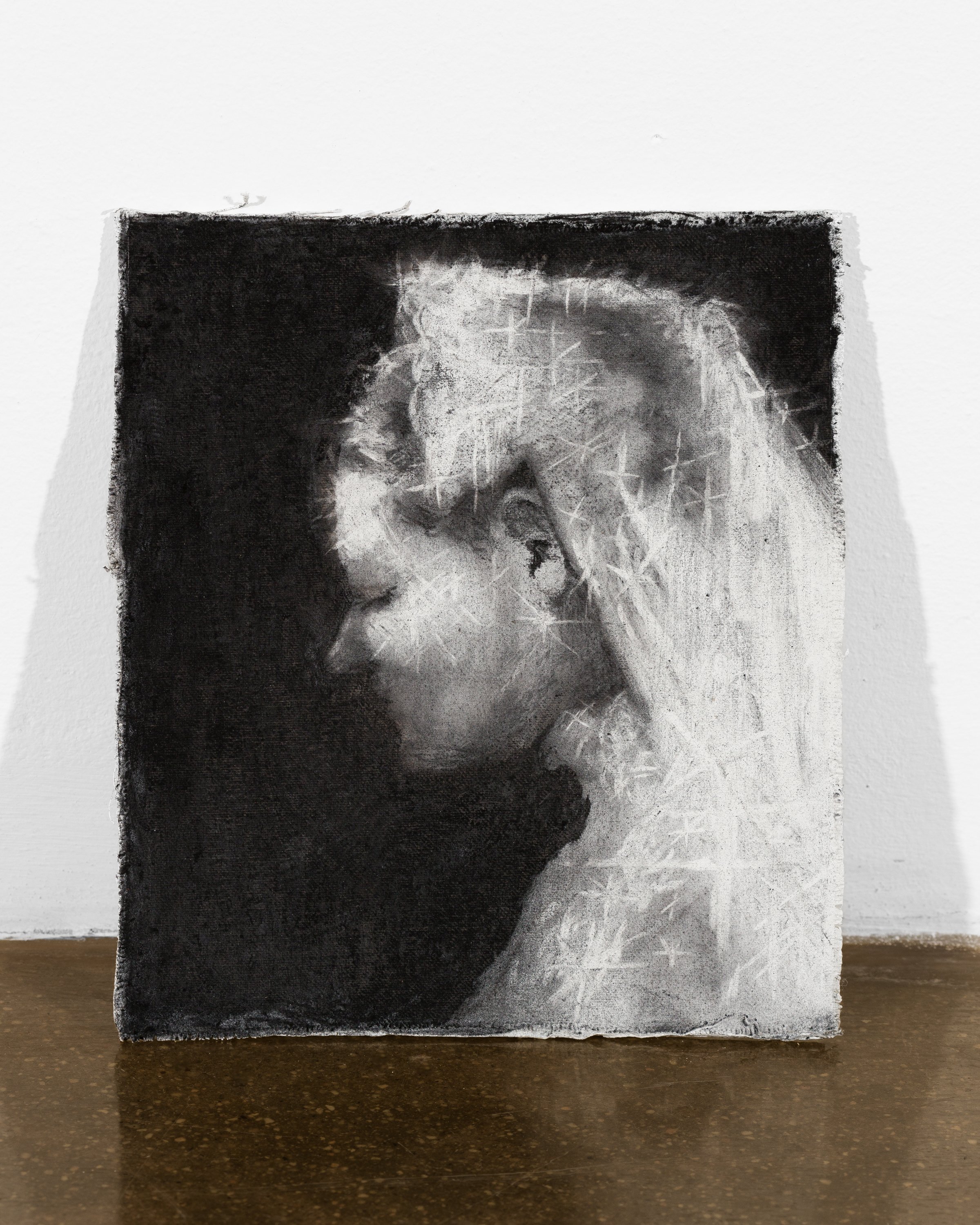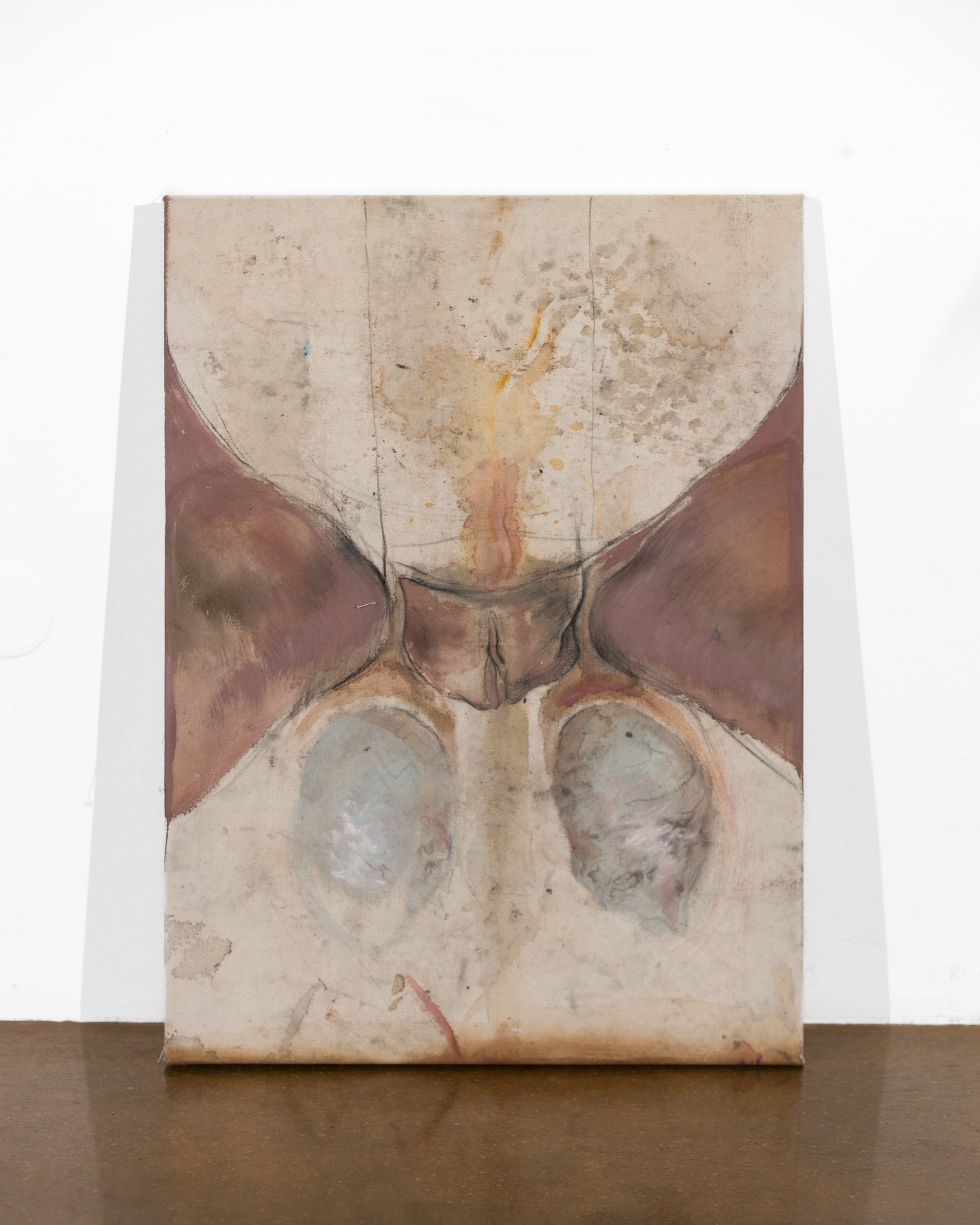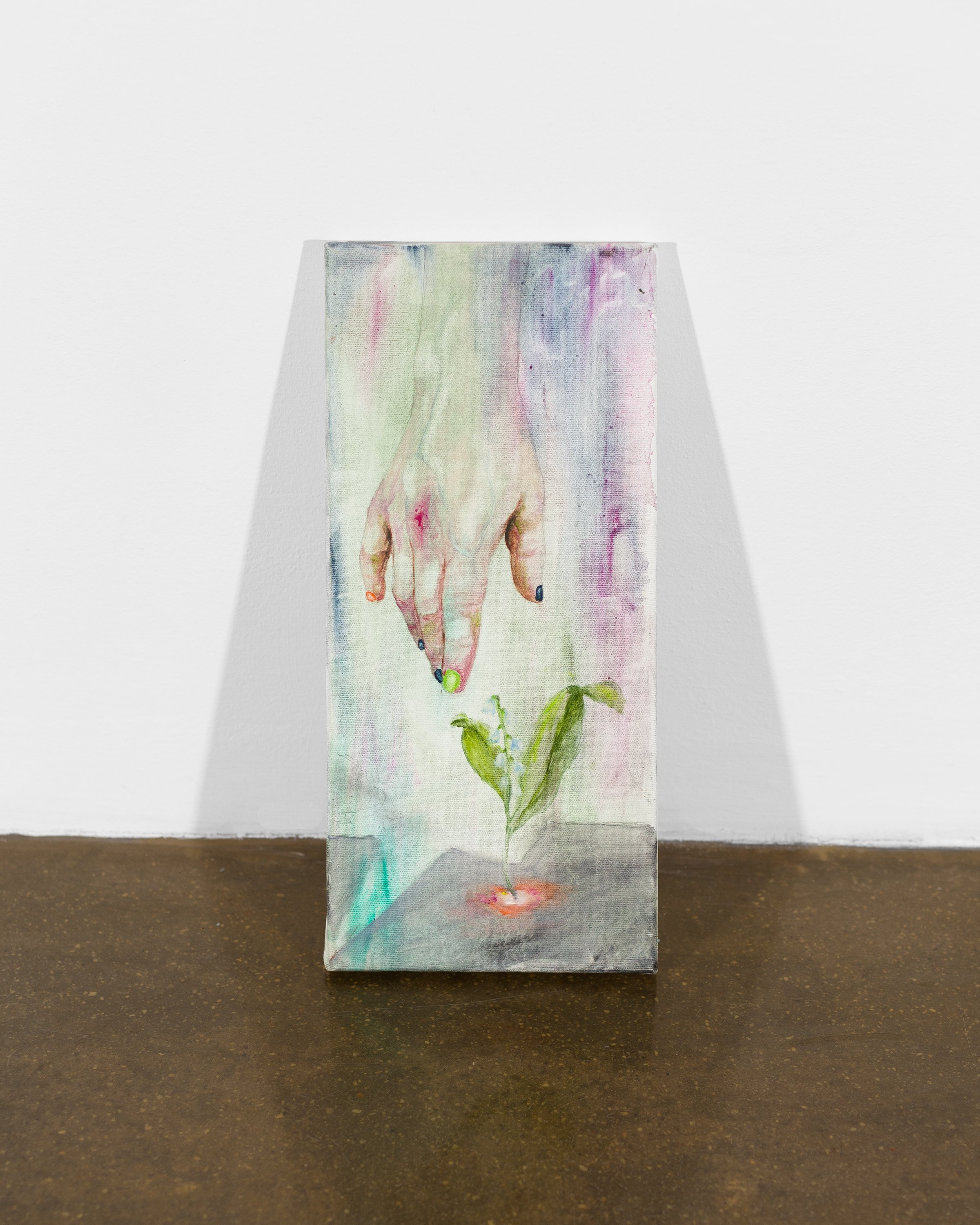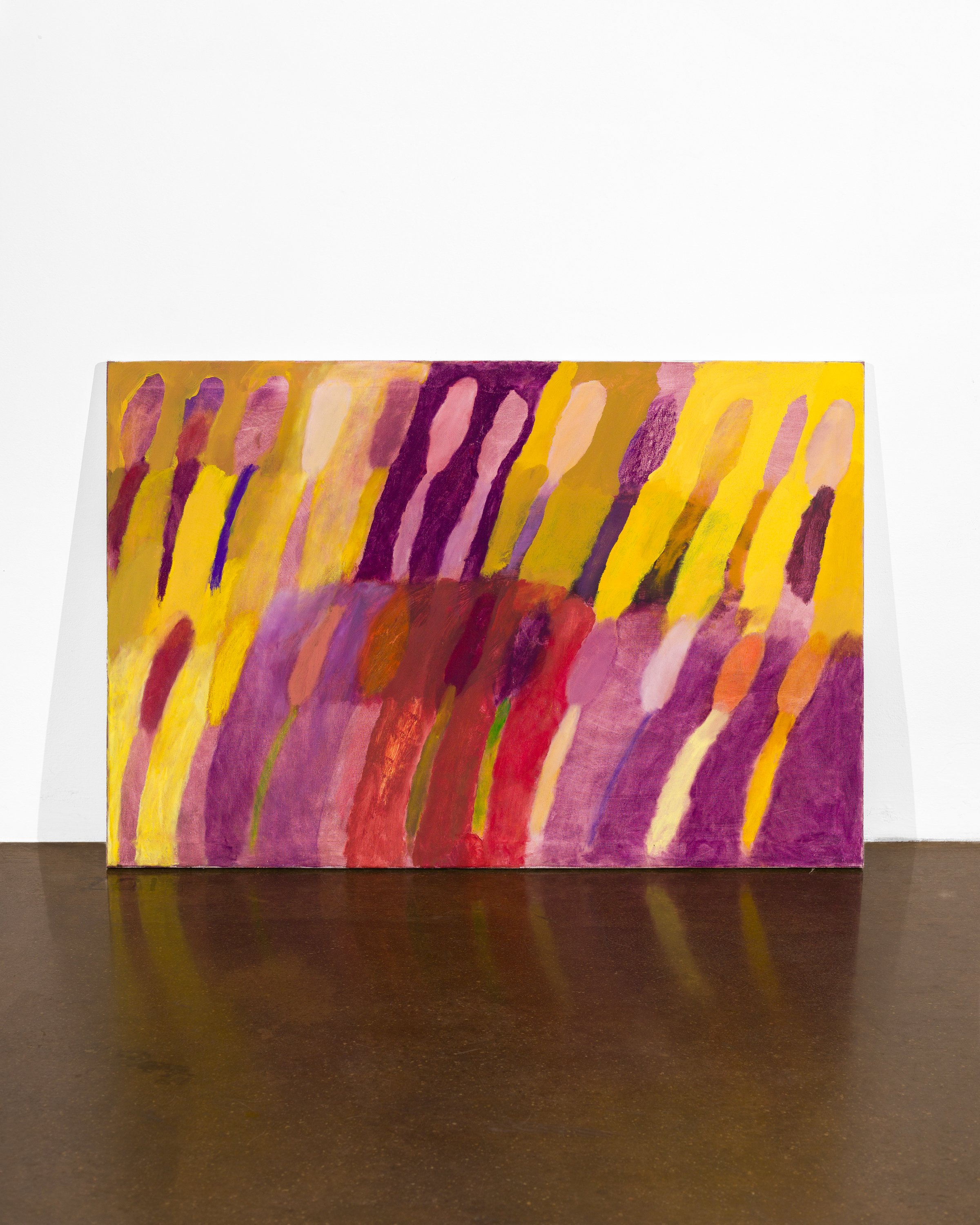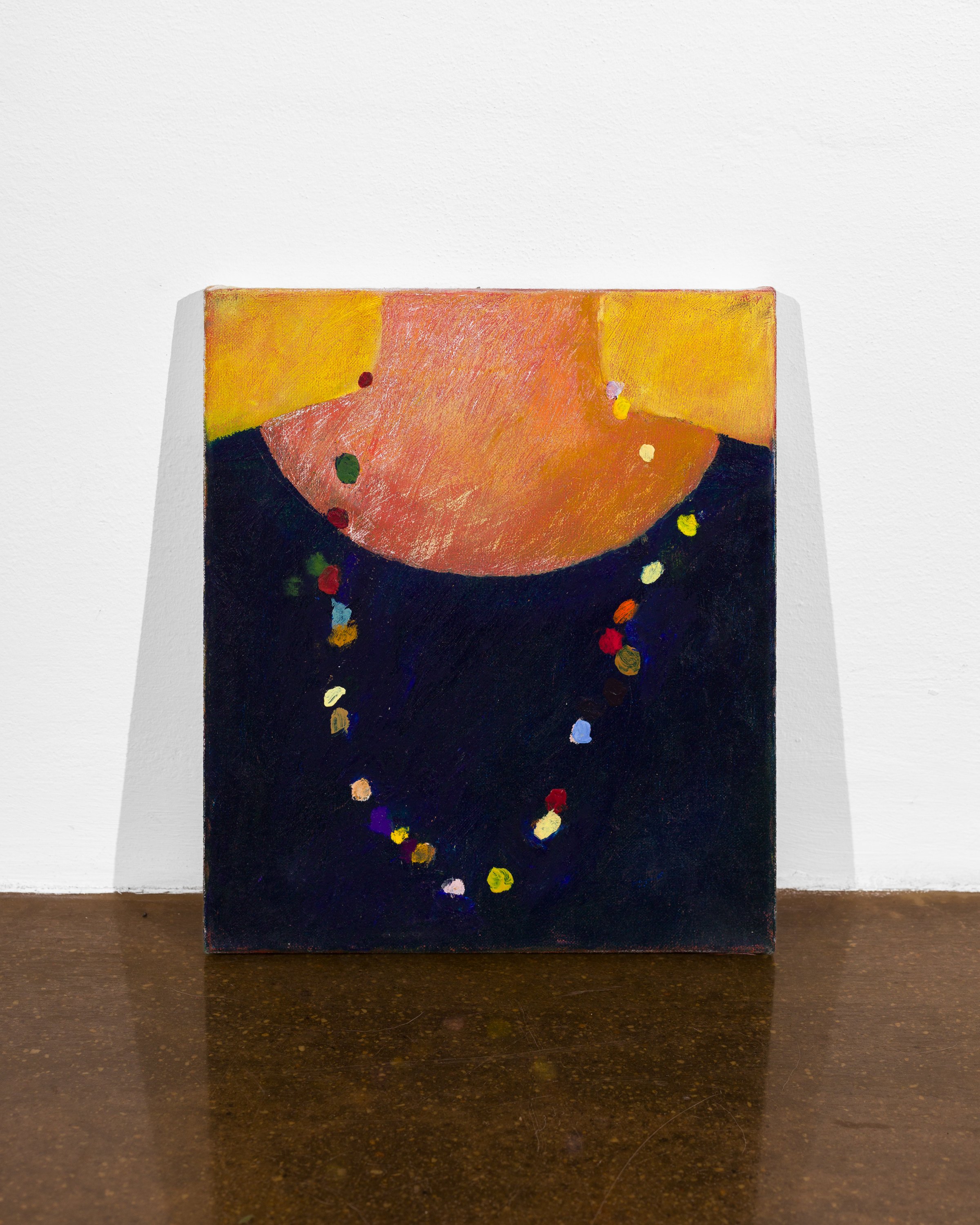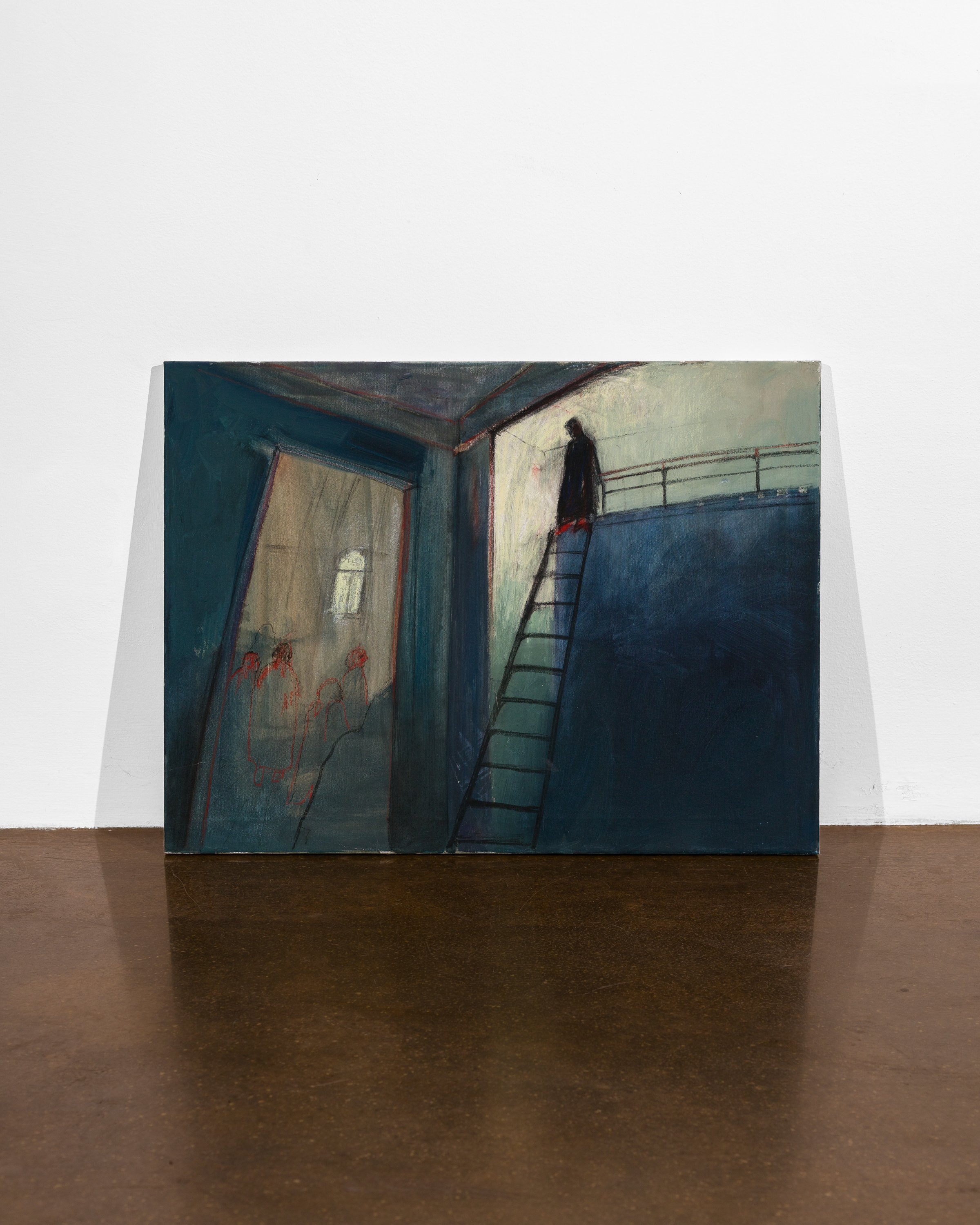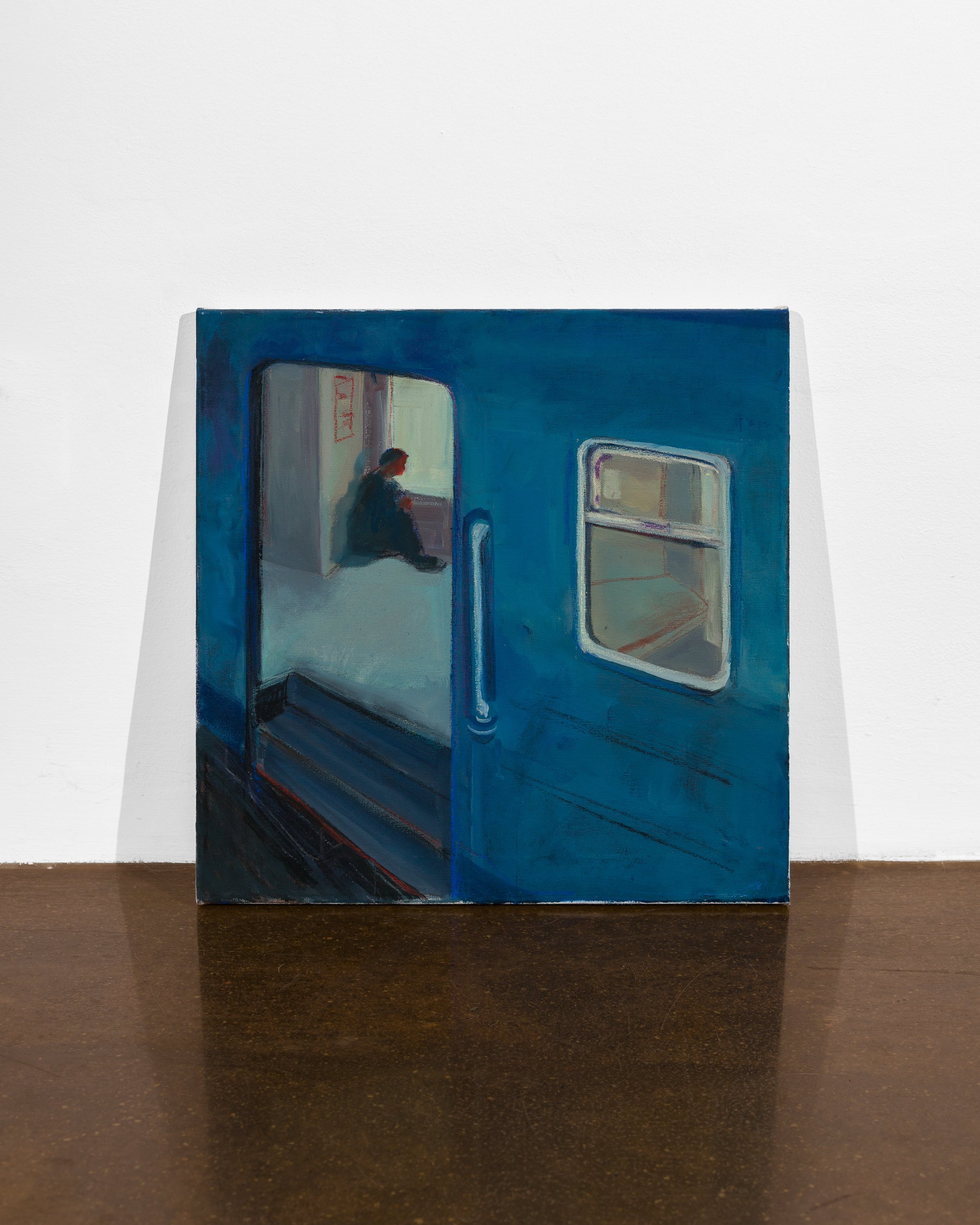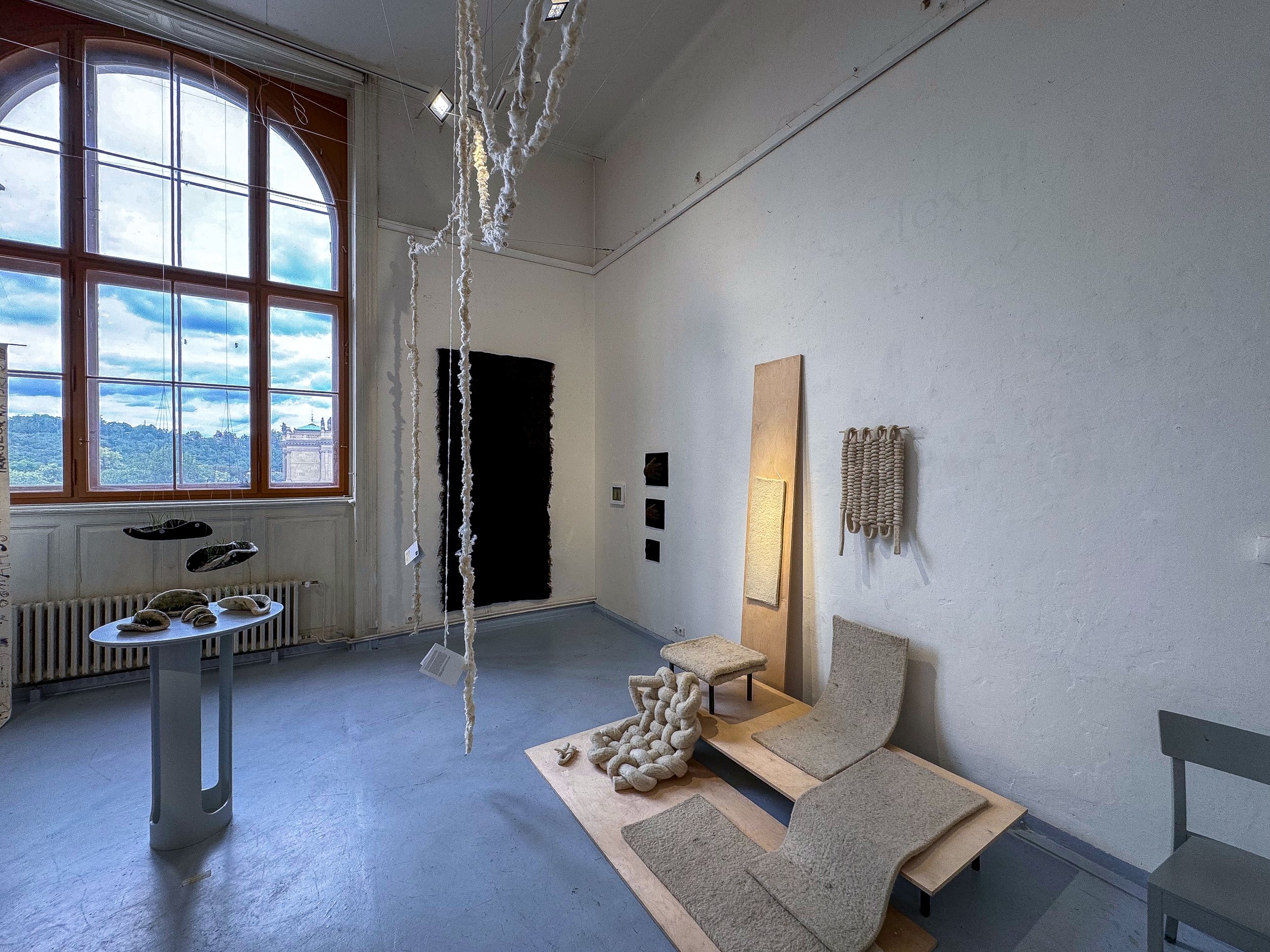AVU WINTER 2025
This year’s AVU Winter 2025 showcase is a vibrant celebration of emerging talent from the Academy of Fine Arts in Prague. From immersive installations to thought-provoking paintings and sculptures, the exhibition highlights the diverse voices of a new generation of artists. Each creator brings their unique perspective, exploring themes like identity, memory, and the delicate balance between humanity and nature.
Whether it’s Klára Hartlová’s hauntingly beautiful abandoned spaces, Dorka Hlinková’s playful yet profound reflections on urban life, or Lisnycha Anastasiia’s meditative Garden of Thoughts, this year’s works invite you to pause, reflect, and engage. Join us as we dive into the stories behind the art and the artists shaping the future of contemporary creativity.
Klára Hartlová
Klára Hartlová’s final semestral work explores themes of loneliness and its impact on the human psyche, nostalgia, and the gradual decay of memories and material objects. Through an installation reminiscent of a long-abandoned room, the artist invites viewers into her oneiric world, where the real merges with the fantastical, and the conscious slips into the unconscious. Her paintings, organically integrated into the installation, further develop these themes, conveying an experience of abandonment and solitude that is both crushing and strangely comforting.
The scene is set with wrapped and dusty chairs around a table covered in moss and animal remains—a space that seems untouched by visitors for years, yet once may have been a place of warmth and safety. The viewer is invited to share an imaginary cup of tea (or something stronger) in this immersive, half-decayed room, where one can rest in the shadow of a lost home and the decomposing corpse of a forest creature.
Dorka Hlinková
For Dorka Hlinková, nature is where she feels most real—a place of balance, where life and death coexist without pretense. It’s comforting, pure. But in the city, she’s reminded of what it means to be human. Humans, she observes, are part of nature yet driven by a need to leave a mark. They build towering structures, define boundaries, and reshape the world. Nature, though silent, seems to cry out: Humans are thieves! Humans are destroying me!
Dorka wrestles with this. She knows she’s part of the problem, yet she also sees beauty in humanity’s drive. Behind the walls and cities, she sees work, love, and care—people building lives, creating, and providing for their families. Maybe humans aren’t just destroyers, she thinks. Maybe they’re creators, too.
Torn between the wilderness she longs for and the city she depends on, Dorka finds clarity in one truth: behind all the noise, smog, and chaos, there’s a human—pure, innocent, and searching for home.
Dorka Hlinková's Work Featured at HIDDEN
Lisnycha Anastasiia
Garden of Thoughts
Lisnycha Anastasiia’s Garden of Thoughts is a triptych that turns our gaze inward, to a world where thoughts sprout, grow, and wither like cultivated plants. It’s a space for the cultivation of ideas—their birth, transformation, and eventual decay. The work is both a meditation and a metaphor, a symbolic altar honoring what has been nurtured and preserved. It speaks to the cyclical nature of life, echoing the rhythms of nature that once guided our ancestors’ understanding of time and existence. Like any garden, this one requires care, renewal, and harvest, for it is here that our inner essence takes shape.
The garden is set within a room, a confined space that mirrors the boundless expanse of the human mind. It’s an inner realm where thoughts emerge, interact, and vanish. A fountain, inspired by the Ukrainian philosopher Hryhorij Skovoroda’s concept of an inner spring, serves as a symbol of self-knowledge and spiritual fulfillment. Birds, fleeting and light, represent the transience of thoughts—they flutter by, disappear into the night, and leave behind only the faintest trace of their presence.
The triptych invites the viewer not just to observe, but to reflect on their own inner garden—a place of constant change, renewal, and the quiet shaping of reality.
Roman Košťál
Even in this exhibition Roman Košťál adheres to his original artistic style, which is based on a combination of old black-and-white films, dark astral planes, and forgotten nightmares. The canvases, crowded with characters of various psychological profiles and social roles, remind one of Bosch's panoptical painting “Christ Carrying the Cross,” leaving us unsure whether we are looking at a pandemonium of saints or, conversely, a pantheon of devils. Opposites turn upside down, and the wall between good and evil falls apart. The fragmentation of separate bizarre scenes transitions into a monumental synthesis of something inexplicable yet outstanding.
Košťál's artistic diction speaks to us in riddles and ciphers, but each motif and scene carries its logical background, which only the author knows. The paintings are imbued with the Elijah syndrome of hopelessness and disappointment, which subsequently evolves into a bittersweet and almost euphoric longing. In the author’s expressive repertoire, one can also find erotic and philosophical motifs, particularly in connection with Nietzsche's “will to power.” Symbols of razor blades representing metallic tears form a periphrasis for the pain of human existence, and the depicted act of cannibalism serves as a metaphor for creating art, where the author metaphorically consumes himself in the search for inner inspiration.
– Kamil Princ
Roman Košťál's Work Featured at HIDDEN
Ema Kissová, Jolana Hartmannová, Matěj Kučera, Rebeka Široká
For the past two consecutive installations, the space has been shared by multiple students from the Academy of Fine Arts, not as individual isolated works, but as a collective attempt to merge their creations into one cohesive installation. This approach, which began with a collaboration between Emilie Fňukalová, Jakub Brázda and Matyáš Kořínek, continues with the current winter semester installation.
This time, four new artists—Ema Kissová, Jolana Hartmannová, Matěj Kučera, and Rebeka Široká—have come together to create a fusion of their works, once again experimenting with connection and integration within a shared space. The intention is not to display their pieces separately in corners, but to build a unified experience that transcends individual boundaries, exploring how their works can complement and enhance one another.
–
Ema Kissová has been playing with stones since childhood, and not much has changed since then. For her, stone is not just a material—it’s a living, ever-changing organism, a medium that defines the shape and essence of her sculptures. Working primarily in figurative stone carving, Kissová explores the relationship between humans and nature, focusing on the enduring process of creation, which she often considers more significant than the final piece itself.
Stones symbolize endless cycles—transformation, deep wisdom, and knowledge. Kissová approaches them as if peeling back layers, revealing forms that have existed within the material for millennia. The contrast between the soft, organic shapes she carves and the unyielding nature of the stone creates a tension that evokes the dynamism of life itself. Her sculptures, often abstract yet imbued with figurative elements, invite introspection and emotional resonance, offering a space for reflection on the cycles of life and the mysteries that bind us to the natural world.
–
In collaboration with architect Adam Zatloukal, Matěj Kučera designed concrete models of columns and functional sculptures for a kindergarten. The columns, extending from the architecture into the garden, transformed into concrete rock formations, bunkers, and even a fountain. The result was a space that felt organic and natural, offering endless possibilities for play and exploration for children.
In his independent work, the artist is currently exploring animal figures, with a focus on playfulness. Through the form of rocking chairs or cradles, he investigates the intersection of seriousness and whimsy, appealing to both the child viewer and the “inner child” in adults. He is considering a move into illustration, while also planning to scale up his cradle models to human size, freeing them from the constraints of functional toy design. Additionally, he is working on a collection of animal trophies, further blurring the lines between play, art, and the natural world.
Ema Kissová's Instagram
Jolana Hartmannová's Instagram
Matěj Kučera's Instagram
Rebeka Široká's Instagram
Hubert Švaříček
Hubert Švaříček’s metal objects are a meditation on the role of the wall-mounted painting. He explores the “objecthood” of painting, focusing on its inherent characteristics—rectangular shape, spatial placement, the way canvas folds over the edge of a frame, the physical mass of the painting itself. He strips away color, deliberately omitting the information it carries, to concentrate on the process of creating the canvas as a carrier—a vessel yet to be filled with meaning.
His work exists in the liminal space between painting and sculpture. The act of stretching a canvas, often dismissed as a mere craft rather than an artistic practice, becomes a sculptural ritual for Švaříček. Through its deliberate, time-consuming repetition, the process transforms into a gesture—a way of interrogating the medium itself. What is a painting, he asks, when reduced to its most elemental form? His work challenges us to reconsider the boundaries of art, craft, and the rituals that define them.
Lucie Hošková
Lucie Hošková’s recent work delves into the themes of death, decay, and the eternal struggle between body and soul—a duality she sees as two wrestling entities. For her, these themes are not just philosophical musings but tools for constructing her own visual cosmologies. She strives to communicate through universal symbols, aiming for a language that resonates with everyone, even if she acknowledges it as an unattainable ideal.
This year, Lucie has largely abandoned the figure in her work, with one exception, though she plans to reintroduce it into her abstract paintings in the future. Her inverted heads, for instance, depict the moment immediately after death, symbolizing a departure from rationality and an embrace of ecstasy or extreme mental states as a way to reframe reality. A larger figure on a separate canvas explores the weight of the body in death, particularly through the act of hanging—a grim metaphor for the body’s burden, echoing gnostic ideas of the body as something to be transcended through spiritual life and asceticism.
Lucie’s work is often guided by a simple observation: matter falls downward, while metaphysical forces drift upward. This tension is evident in her piece Ur, a large portal-like painting, as well as in an entirely black canvas that layers earth, suggesting a reconciliation between the spiritual and the material. She sees these explorations as moments where the soul can make peace with physical reality, blurring the line between the two.
Lucie Hošková's Work Featured at HIDDEN
Anna Krištofíková
Anna Krištofíková's artwork reflects the inspiration drawn from her semester abroad at Cooper Union in New York. In the motif of independently painted bare legs, she points out how a person is endangered and vulnerable when traveling to unknown places. The tense smile in contradiction with the bitten, bleeding lip thematizes the social tension that, like a straitjacket, clutches our soul. A trio of self-portraits with naked breasts and a t-shirt-covered face standing next to a wall with barbed wire brings a sad message about deindividuation and being bound by boundaries not only of land and states but also of one's own possibilities and fate. A paper airplane flying over the wall symbolizes the desire for freedom that cannot be achieved.
In the artist's works, existential feelings of alienation are noticeable, as perceived by Albert Camus in his novel "The Stranger." However, through her paintings, she also explores herself, ultimately reaching an epiphany where, through her numerous self-portraits, she recognizes her own identity and contemplates eternity. Krištofíková's works combine the bitterness of oppressive psychological states with delicate visual beauty and a filigree sense for detail, where the slightest brushstroke can change the overall meaning of the painting. At last, the stars emanating from the retina bring a spark of much-needed hope.
– Kamil Princ
Anna Krištofíková's Work Featured at HIDDEN
Anna Helová
Anna Helová’s paintings are a meditation on color, surface, and the landscapes she inhabits. Her work captures the rhythm of walking—whether through cities or forests—transforming that movement into abstract, emotional reflections. For her, painting is a way to process the immediacy of experience, turning fleeting moments into something enduring.
She often speaks of a necklace she carries, a talisman of safety and protection. It’s a quiet companion on her journeys, a symbol of resilience and connection to the world around her. In her art and her life, Anna finds beauty in the interplay of movement, memory, and the landscapes that shape her.
Anna Helová's Work Featured at HIDDEN
Anežka Hubatková
In the Southern churches, votive plaques depict parts of the body—a knee, a hand, a heart—offered up in prayer for healing. In this series of paintings, the artist reimagines these offerings, but instead of isolated body parts, she presents entire problems in all their complexity. Each canvas becomes a votive gift, a plea for understanding and resolution.
The works speak of physical traumas, some overcome together, others standing as barriers between us. A couple grappling with misunderstandings and anxieties, their love strained but enduring. A father and son, the shadow of violence driving the son into the refuge of the forest. A mother and daughter on the threshold of a family cottage, confronting old wounds and new fears. A young girl, far from home, navigating obstacles with the distant guidance of her mother and the mythical horse Falada, who watches over her like a guardian spirit.
Throughout the series, the horse emerges as a recurring motif—a silent confidant, a symbol of resilience, and a vessel for our pain. These paintings are not just depictions of struggle but acts of devotion, inviting us to lay bare our own wounds and seek solace in the act of sharing.
Anna Banytiuk
Anna Banytiuk’s recent work explores the interplay of space and perspective. Drawing inspiration from her surroundings—glimpses into rooms, the interiors of trains—she creates compositions that feel both intimate and expansive. Her earlier work grappled with the weight of war, a reflection of her Ukrainian roots, but she has since shifted her focus. Now, her paintings are about building new foundations in an unfamiliar environment, navigating the uncertainties of the future, and finding stability in flux.
Anna plays with the boundaries between the real and the imagined, leaving room for interpretation. Her work invites the viewer to decide what’s unfolding within the frame, making each piece a collaborative act of meaning-making. It’s art that doesn’t dictate but instead opens a dialogue, quietly echoing the complexities of displacement and resilience.
Anna Banytiuk's Work Featured at HIDDEN
Matyáš Fiala
Matyáš Fiala sees his creations as characters in a grand narrative, where letters, words, and idioms layer meanings to shape a new reality—one that mirrors our own but diverges in subtle ways. Like language, which constructs meaning through context, his work explores the interplay between societal constructs and individual stories. He uses a conceptual compass to navigate this terrain, spanning four dimensions: from The Dream to The Grid (societal structures), and from Utopian to Dystopian.
The Dream, in its utopian form, represents boundless freedom—a realm of endless possibilities. But when optimism fades, it becomes a dystopian nightmare, where freedom turns to chaos and societal constraints dominate. This duality reflects the struggles of contemporary artists, who face skepticism about the future and a lack of platforms for their work. Art, meant to transcend societal norms, often clashes with the reality of those norms.
Fiala also reflects on identity and the weight of societal expectations. As children, we’re shaped by our environment and genetics, often sleepwalking into roles we didn’t choose. We carry burdens not of our making, navigating a world where truth is subjective and choices feel impossible. Yet, we must engage, take a side, and contribute to the cycle—even as we question its purpose.
Marek Tomáš Mirčev
Marek Tomáš Mirčev’s work revolves around relief, a medium he finds uniquely suited to exploring layers of time, memory, and context. His objects merge natural, geological, and human elements, arranged in installations that uncover hidden narratives and weave together personal, cultural, and historical threads.
Mirčev’s creations exist in a space between abstraction and meaning, balancing the weight of information and emotion. They are imprints—of individual and collective memory—inviting viewers to engage not just visually but emotionally. His installations are less about display and more about revelation, offering a quiet yet profound space for reflection. In his hands, relief becomes a language, one that speaks softly but leaves a lasting impression.
Found Something You Love? Let’s Make It Yours
Many of the works featured here are already available in our online store—browse and take home your favorite piece today.
But what if you saw something in the photos that’s not listed online? No problem. If a specific artwork from the installation caught your eye, we’re here to help:
Contact us directly at filip@hiddengallery.cz to check availability.
Arrange a studio visit to see the piece in person and meet the artist.
Get expert guidance to find the perfect artwork for your space.
Don’t hesitate to reach out—whether it’s a piece from the photos or something completely new, we’ll make sure you don’t miss out.


















